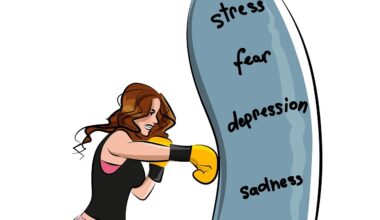The Impact of Cultural Beliefs on Pica and Eating Disorders
Pica is an eating disorder characterized by the consumption of non-food items, such as dirt, clay, or paper. This disorder is often influenced by cultural beliefs and practices that shape individuals’ perceptions of food and health. Various cultures have documented instances of pica, often justifying it through traditional practices or rituals. For example, some may believe that eating clay or mud provides health benefits or cures illnesses. Additionally, in specific cultural contexts, pica can be normalized or overlooked, leading to misconceptions about nutritional needs and health consequences. Understanding how cultural beliefs intersect with pica is crucial for effective intervention strategies. It is important to assess the motivations behind the behavior and educate individuals about the risks associated with consuming non-nutritive substances. Mental health professionals and nutritionists should therefore work together to recognize these behaviors and address them appropriately within their cultural frameworks. In doing so, they can foster healthier eating habits while respecting cultural identities and traditions that influence dietary choices and practices. This holistic approach encourages a better understanding of and response to pica and related eating disorders.
Furthermore, the impact of cultural beliefs extends to perceptions of body image and beauty standards. Different cultures have varying ideas on what constitutes an ideal body shape and size. For instance, in some societies, larger body sizes are associated with wealth and prosperity, leading to a different set of eating behaviors compared to cultures where thinness is idealized. Such societal pressures can either exacerbate or mitigate eating disorders like pica. In cultures where thinness is glorified, individuals may resort to eating non-nutritive substances as a way to suppress appetite or as a means of coping with stress. Additionally, the stigma around mental health issues, including eating disorders, can prevent individuals from seeking help, further perpetuating harmful behaviors and beliefs. It is crucial for healthcare providers to recognize these cultural narratives and their implications for treatment. Initiatives aiming to raise awareness about eating disorders need to incorporate cultural sensitivity to effectively address the complexities involved. By acknowledging these influences, professionals can tailor interventions that resonate with individuals’ experiences and cultural backgrounds, fostering a more inclusive healthcare environment.
Cultural Contexts and Their Influence on Eating Disorders
Moreover, cultural contexts significantly shape the prevalence and nature of eating disorders such as pica. For example, certain indigenous cultures may integrate specific food practices that involve consuming clay or soil, often related to geographical availability and environmental factors. These practices can reflect a deep connection to one’s land and heritage, complicating the medical perspective on pica. Understanding these cultural nuances is essential in determining whether such eating behaviors are instances of pica or culturally accepted practices. Consequently, misdiagnosis or misunderstanding may lead healthcare providers to pathologize behaviors rooted in cultural identity, which could damage the cultural fabric and individual self-esteem. Effective treatments must therefore distinguish between harmful eating disorders and culturally significant practices. Clients must feel respected in their cultural beliefs while receiving appropriate education on the potential health risks associated with pica. When treating individuals from diverse backgrounds, an appreciation for their heritage can enhance therapeutic trust and efficacy. Consequently, engaging community leaders and cultural informants may offer valuable insights into creating a supportive environment for treatment, recovery, and long-term health outcomes.
In addition to cultural beliefs, socioeconomic status plays a significant role in the prevalence of pica and other eating disorders. Disadvantaged populations may experience food insecurity, leading to a greater likelihood of engaging in pica. Economic stressors may compel individuals to find alternative sources of sustenance, resulting in the consumption of non-food items. When traditional food sources are scarce, people may resort to eating items that are readily available yet not consumable from a nutritional standpoint. Furthermore, limited access to healthcare services exacerbates this dilemma, as individuals may not receive proper guidance regarding their eating behaviors. Therefore, it is essential to consider socioeconomic factors when addressing pica and related disorders. Policymakers must focus on providing adequate nutritional education and resources to at-risk communities. By fostering food security and improving access to healthcare, we can reduce the occurrence of pica and other eating disorders. Collaborative initiatives can help create community support networks to address these issues holistically and sustainably, ultimately fostering healthier lifestyles and reducing the stigma surrounding eating disorders.
Stigmas and Misunderstandings in Health Perspectives
Moreover, the stigmas associated with eating disorders, including pica, can complicate individuals’ willingness to seek help. Many believe that eating disorders are solely a result of personal failings or a lack of willpower, which is far from the truth. Cultural stigmas can make it difficult for affected individuals to talk about their experiences and seek the necessary support. This is particularly pertinent for those from cultures that prioritize food scarcity or shame around eating habits. Educating communities about the complex interplay of psychological, emotional, and social factors that contribute to eating disorders is vital for combating this stigma. Mental health professionals should work to create safe spaces for discussions surrounding eating behaviors. Encouraging open dialogues can demystify the topics surrounding pica and other disorders that people may struggle with in silence. Understanding that these issues can stem from a variety of systemic and individual factors can foster empathy and support rather than judgment. De-stigmatizing conversations about these disorders can empower individuals to pursue the help they need in a compassionate and understanding environment.
Additionally, addressing eating disorders within a cultural framework requires incorporating education that is culturally relevant and sensitive. Most existing resources and treatment plans overlook the cultural dimensions of pica and other eating disorders, leading to limited effectiveness in various populations. Implementing educational programs that acknowledge cultural beliefs, practices, and influences can significantly improve awareness and understanding of these disorders. Such educational initiatives should aim to reach community members, schools, and healthcare providers, creating a network of informed individuals who can support those affected. Education should be tailored to bridge gaps in knowledge and eliminate stereotypes associated with eating disorders. By actively engaging communities in discussions about body image, diet, and health, we can create an environment that promotes preventive health behavior. Ultimately, education is a powerful tool in dismantling harmful attitudes and fostering positive approaches to mental health connected to eating disorders and cultural beliefs. Culturally-informed interventions can lead to better support systems and enhance overall community health outcomes.
Conclusion and the Path Forward
In conclusion, the impact of cultural beliefs on eating disorders like pica is an area that requires further exploration and understanding. As we continue to uncover the complexities of these disorders, it becomes increasingly clear that cultural contexts play an essential role in shaping individuals’ eating behaviors and experiences. Addressing pica demands a sensitive approach that respects cultural identities while providing necessary interventions. Coordinated efforts from communities, health professionals, and policymakers are critical to developing and implementing effective strategies to address eating disorders. By embedding awareness and support within cultural frameworks, we can foster healing and recovery that acknowledges both individual needs and cultural heritage. As we aim to improve understanding and treatment of eating disorders, it is imperative to consider the diverse factors that influence individuals’ experiences. Through collaborative dialogues, education, and community engagement, we can create a supportive environment that empowers individuals to overcome eating disorders. This inclusive approach not only helps individuals but also strengthens community health, promoting positive changes that resonate across generations, ultimately leading to a healthier society.
In order to fully address the complexities surrounding pica and related eating disorders, it is critical to continue advancing research in this area. Studies focusing on the relationship between cultural beliefs, environmental factors, and psychological conditions hold potential for creating the foundation for future therapies and preventative measures. Multidisciplinary research that engages anthropologists, psychologists, and healthcare professionals can offer a more holistic understanding of eating disorders within specific cultural contexts. Insights gained from cultural studies can help develop intervention programs centered on community norms and beliefs. Such approaches ensure that treatment is not only effective but also culturally respectful and relevant. Additionally, raising awareness amongst affected communities can empower individuals to address these challenges constructively. This can involve setting up support groups that emphasize shared experiences and offer emotional backing in recovery journeys. We must also advocate for accessible and culturally competent healthcare services that understand the unique needs of diverse populations suffering from eating disorders. The ongoing exploration of cultural beliefs related to eating behaviors can lead to innovative solutions that address the root causes of pica and other eating disorders. By fostering collaboration and continued research, we can make significant strides in combating these conditions effectively.


